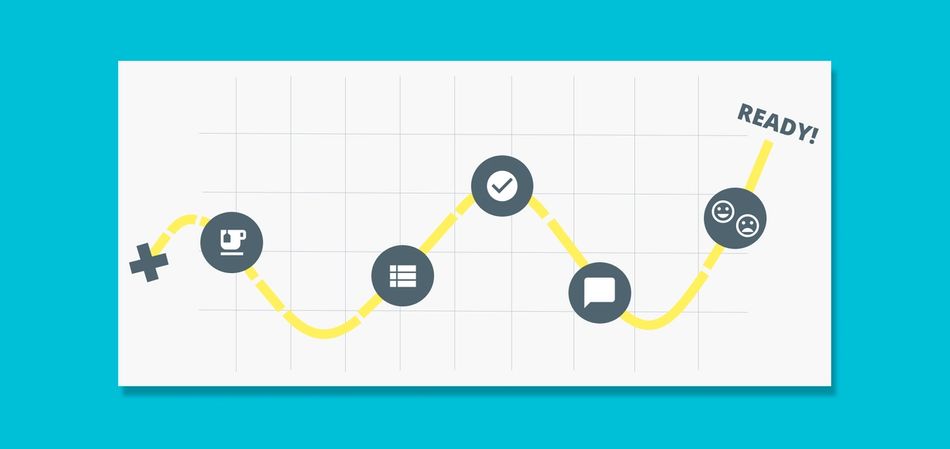
Many of us start each day by going over the tasks swirling around in our heads. It's often a jumble of projects, emails, and a palette of items we can't quite sort, but all seem urgent. Everything can feel like a priority. It's overwhelming. And the process of trying to wrap our heads around it ends up draining more energy than the task itself. What follows — chaotic rituals that make us less productive — becomes second nature. I know this mental dance well. You probably do too.
But how do we break this loop of overwhelm and improve our productivity?
Start with small wins
Small wins help us feel a sense of progress, which has a powerful impact on how we feel and perform at work.
This will look a little bit different for everyone. And it largely comes down to the habits and routines that help us focus and complete tasks. Checklists or sticky notes work for some. Others may use a series of unconventional shorthands like unread emails or open tabs in the browser to remind us of the things we still need to do. It's a disjointed collection of cues, tools, and processes.
However, as noted in Charles Duhgig's bestseller, The Power of Habit, there's a more effective way to transform a habit and improve your productivity. It has to do with re-focusing on completing consistent smaller tasks overtime that you’ll eventually start doing without thinking—so you can reserve all that brain power for creative problem solving. And the first step in forming these better habits for planning your day is to think about it with small wins in mind.
Small wins help us feel a sense of progress, which has a powerful impact on how we feel and perform at work. Think of it this way: most projects break down into a bunch of smaller todos and processes that are split across roles and teams. So, instead of listing the entire project as the thing you want to get done when planning your day, think about the component items you need to complete yourself.
A small win can be almost anything: sending an email, taking a 30-minute walk, or signing up for a new productivity app in Slack. You probably have a bit of code to write or need to spend an hour triaging issues that are holding you up. These are small, tangible tasks that you can do and feel a sense of accomplishment from when completed that'll propel you forward to the next task. It can even be creating a clear list every day of what you plan to do. The act of narrowing down what’s on your plate every day is a small win that becomes a really big win over time. Think of it as a way to build productivity momentum.
Oh, and don't be afraid to use apps as a support system. Tools like Range help you adopt the habit of staying focused on small wins every day by creating a daily Check-in. And to get you on the right track for your productivity, here’s a map you can follow when composing your daily plan.
The road to a productive day

For a little more context on each step 👇
- Start with a trigger
- How you start your day can have a huge impact on everything that follows. It's a good idea to add a small win at the very beginning of your work day to act as a trigger for your other productive habits. This trigger could be anything from cleaning your desk to making a cup of coffee. You’ll want to choose a low stress, calming task to jumpstart your productivity.
- For instance, it may sound strange, but people who make their beds in the morning tend to be happier and, as a result, are far more productive throughout the day. Be the bedmaker!
- Make a gold star checklist
- Congrats! You’ve already achieved something today. Here comes the (soon to be former) hard part. As you're going over your to-do list in your head, try to build off the small win you just experienced from the previous step in this routine. Focus on tasks you need to complete or let people know about immediately versus the general project with many moving parts.
- A great way to keep yourself focused when setting your daily plan is to write your list as if intended to be shared with someone else. And then share it! It will help keep you accountable for the goals you set and inspire more conscientious decisions on where to focus your energy. Check-ins in Range makes sharing your plan with others on your team super easy.
- Tip: Your plan is about activity. Focus on adding tasks and documents that you'll be working on or events that'll take place that day.
- Celebrate previous small wins
- Now for the fun part! If you follow the first two steps on this list every day, this portion of your routine will have many small wins waiting to inspire you. Because you're going to share this with others, you'll have the added knowledge that people can see the progress you've made and how it's moving the project forward. We all love a bit of validation.
- Tip: Remember to do this every time you plan your day. Too often, we get wrapped up in all the projects and tasks we're doing that we don't take the time to acknowledge our work, which can make us feel like we're not getting anything done at all.
- Silence the chaos for a moment
- Fun part #2: use an icebreaker to break the ice on the tension you feel with all the work in front of you? Reflective exercises like this can help you step away from the chaos and jumpstart your brain and have a bit of fun while doing it. At Range, we’ve done a ton of thinking about psychological safety and how it makes us better able to tackle the challenges at work.
- Tip: To save you time on coming up with these questions yourself or scouring the internet to find some, check out this icebreaker app with over 300 questions to get you started.
- Check-in with yourself
- Finally, you must make sure to process how you feel before you login to work each day. Countless studies have found that emotions like happiness and calmness factor into your ability to get things done. Being aware of this can help you level set when creating your plan tomorrow and seeing that you didn't get as much done as you'd hoped.
- Tip: Forgive yourself if you need time to recover and push forward. Also, by sharing this with others you work with, they can provide support if needed.
While this may sound like common sense, getting into the habit is harder than it looks. Changing old habits is hard, and establishing new ones often harder. And while it takes willpower and practice tools like Range can have a big impact on helping you change the way you run your day. We built it because we ourselves saw the impact that better daily work habits could have on our own work and teams. Think of it as a personal coach that walks you through 5 steps each day in a way that only takes 5 minutes.
I hope this map helps bring more wins to your day. Let us know what you think of this map on social media! And don’t forget to sign up for a free workspace in Range.








